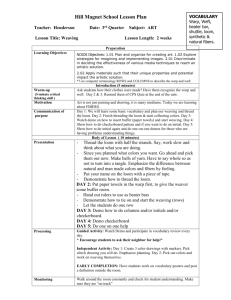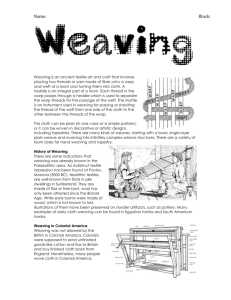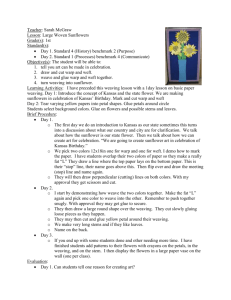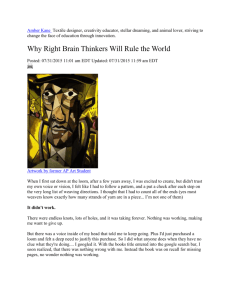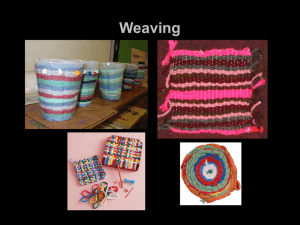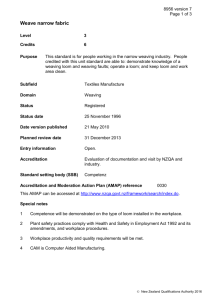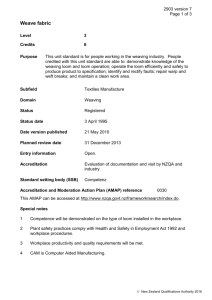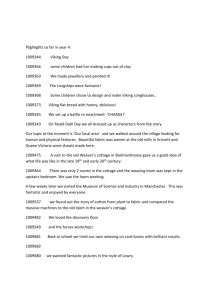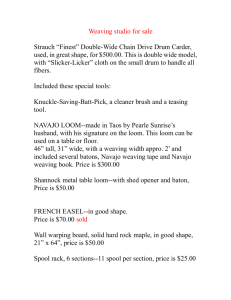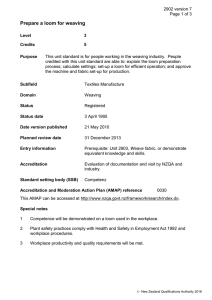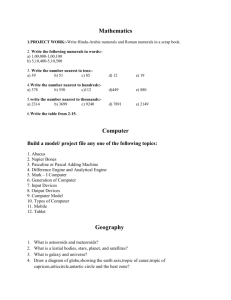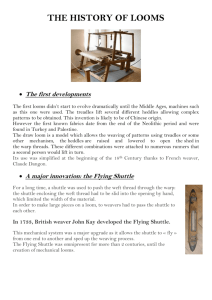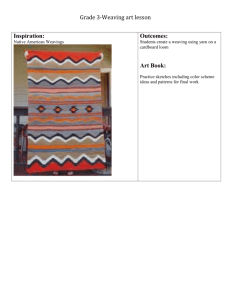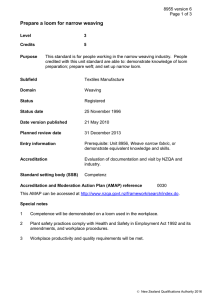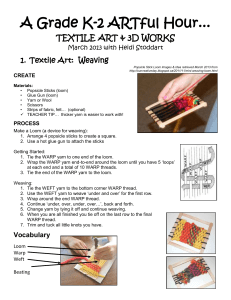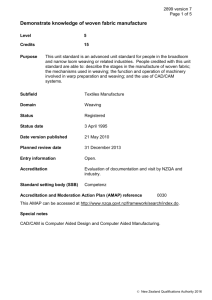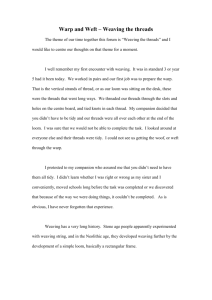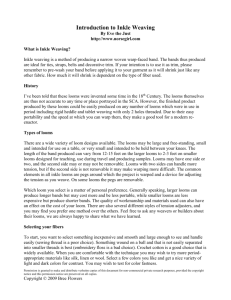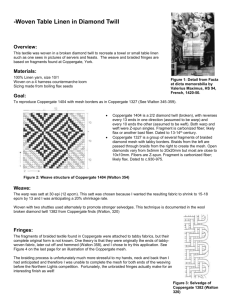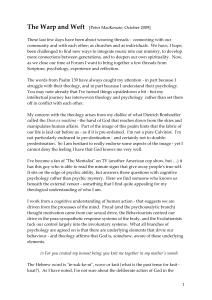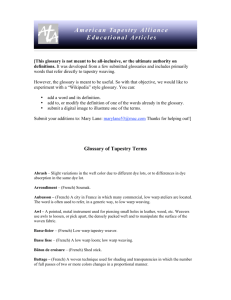Paper Weaving with rubric
advertisement
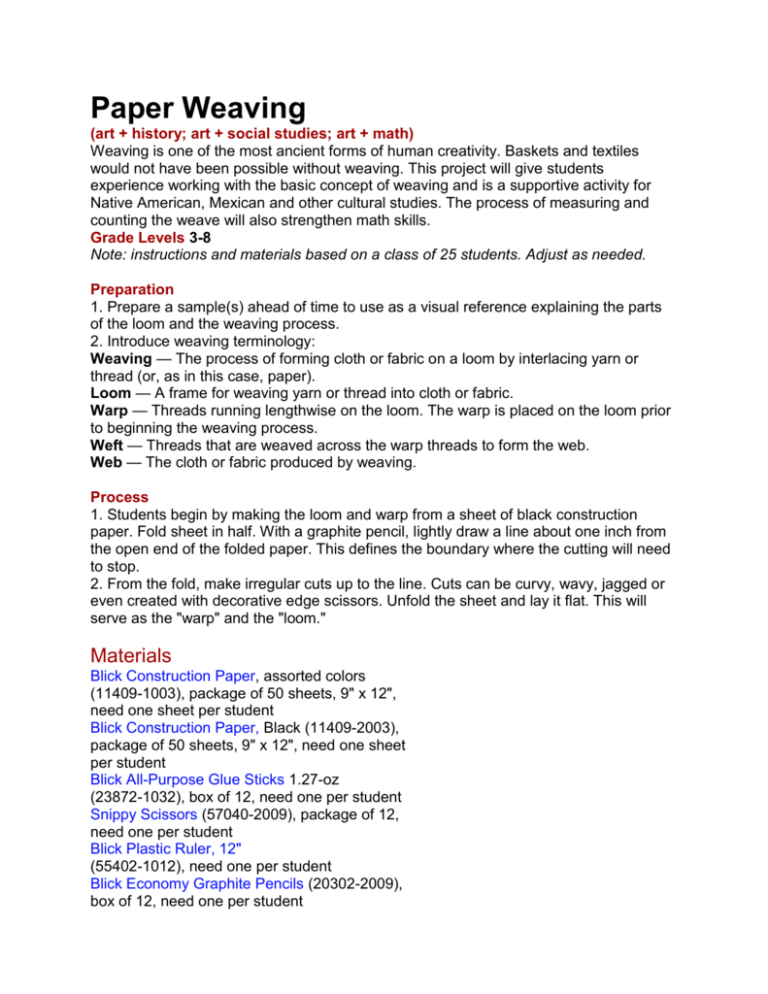
Paper Weaving (art + history; art + social studies; art + math) Weaving is one of the most ancient forms of human creativity. Baskets and textiles would not have been possible without weaving. This project will give students experience working with the basic concept of weaving and is a supportive activity for Native American, Mexican and other cultural studies. The process of measuring and counting the weave will also strengthen math skills. Grade Levels 3-8 Note: instructions and materials based on a class of 25 students. Adjust as needed. Preparation 1. Prepare a sample(s) ahead of time to use as a visual reference explaining the parts of the loom and the weaving process. 2. Introduce weaving terminology: Weaving — The process of forming cloth or fabric on a loom by interlacing yarn or thread (or, as in this case, paper). Loom — A frame for weaving yarn or thread into cloth or fabric. Warp — Threads running lengthwise on the loom. The warp is placed on the loom prior to beginning the weaving process. Weft — Threads that are weaved across the warp threads to form the web. Web — The cloth or fabric produced by weaving. Process 1. Students begin by making the loom and warp from a sheet of black construction paper. Fold sheet in half. With a graphite pencil, lightly draw a line about one inch from the open end of the folded paper. This defines the boundary where the cutting will need to stop. 2. From the fold, make irregular cuts up to the line. Cuts can be curvy, wavy, jagged or even created with decorative edge scissors. Unfold the sheet and lay it flat. This will serve as the "warp" and the "loom." Materials Blick Construction Paper, assorted colors (11409-1003), package of 50 sheets, 9" x 12", need one sheet per student Blick Construction Paper, Black (11409-2003), package of 50 sheets, 9" x 12", need one sheet per student Blick All-Purpose Glue Sticks 1.27-oz (23872-1032), box of 12, need one per student Snippy Scissors (57040-2009), package of 12, need one per student Blick Plastic Ruler, 12" (55402-1012), need one per student Blick Economy Graphite Pencils (20302-2009), box of 12, need one per student Process, continued 3. Measure and cut from the second sheet of paper, one-inch wide by nine-inch strips. Students must use 5 or more different colors. These will serve as the "weft." NOTE: it may work better to pre-cut these prior to class. 4. Begin by weaving one "weft thread" over one "warp thread" then under the next warp and over the next, etc. Continue this process alternating over and under with each weft thread. If the previous weft thread went under the warp thread, the following row will begin by going over the warp. 5. When the weaving is finished, adjust strips to make sure they are straight, and then glue the outside edges. Grade student’s artwork following this rubric Rubric CATEGORY poor fair good excellent Followed Directions The student did not follow instructions and followed their own desire. Student followed some directions while others were ignored. Student followed directions with few detours. Student followed all of the directions thoroughly. Color Requirements Student used less Student used only 3 than 2 different color different colors. choices. Student used only 4 different colors. Student included all 5 different colors or more. Pattern There is no visible pattern. Pattern is somewhat Pattern is somewhat Pattern is well visible but not visible but not clearly defined and used continuous. defined. from beginning to end.
